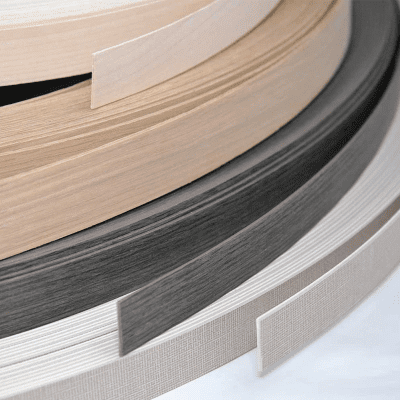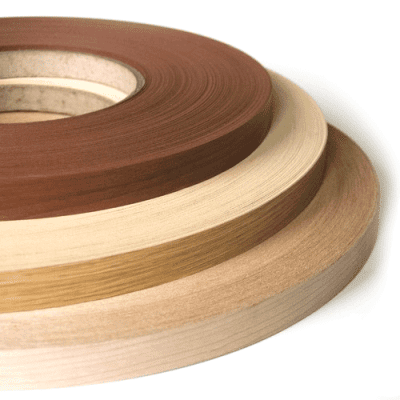Using PVC edge banding is a common practice in woodworking to cover and protect the exposed edges of particleboard, MDF, or plywood. PVC edge banding provides a clean and finished appearance while adding durability to the edges of furniture and other items. Here’s a step-by-step guide on how to use PVC edge banding:
Materials and Tools Needed:
- PVC Edge Banding: Ensure that the edge banding matches the color, pattern, and width requirements for your project.
- Edge Banding Adhesive: Use a suitable adhesive for PVC edge banding. Hot melt glue, contact cement, or specialized edge banding glue are common options.
- Utility Knife or Edge Banding Trimmer: For cutting the excess edge banding.
- Edge Banding Roller or Wooden Block: To apply even pressure during bonding.
- Fine-Grit Sandpaper: Optional, for smoothing edges.

Steps:
1. Prepare the Substrate:
- Ensure that the substrate’s edge is clean, smooth, and free from dust or debris. Sand the edge if necessary to create a smooth surface.
2. Cut the PVC Edge Banding:
- Cut the PVC edge banding slightly longer than the substrate’s edge. Leave a small overhang on each end.
3. Apply Adhesive:
- Apply the edge banding adhesive to the back of the PVC edge banding or directly onto the substrate’s edge, depending on the type of adhesive used.
4. Position the Edge Banding:
- Align the PVC edge banding with the substrate’s edge. Carefully position it to ensure an even overhang on both ends.
5. Apply Pressure:
- Use an edge banding roller or a wooden block to apply even pressure along the entire length of the edge banding. This ensures proper adhesion between the banding and the substrate.
6. Trim Excess Edge Banding:
- Once the adhesive has set, trim the excess edge banding using a utility knife or an edge banding trimmer. Trim along the edges of the substrate for a clean and flush finish.
7. Optional: Sand Edges:
- Optionally, use fine-grit sandpaper to smooth the trimmed edges and create a seamless transition between the PVC edge banding and the substrate.
8. Clean Up Excess Glue:
- If any adhesive has squeezed out during the application, clean it up promptly using a suitable solvent or by scraping it off carefully.
9. Allow to Cure:
- Allow the applied PVC edge banding to cure fully before subjecting it to stress or use. The curing time may vary depending on the specific adhesive used, so refer to the manufacturer’s recommendations.

Tips:
- Use the Right Adhesive:
- Choose an adhesive that is suitable for PVC edge banding. Common options include hot melt glue, contact cement, or specialized edge banding glue.
- Maintain Even Pressure:
- Applying even pressure during the bonding process is crucial for proper adhesion. Ensure that the entire length of the edge banding receives consistent pressure.
- Check Alignment:
- Double-check the alignment of the edge banding before applying pressure. Once the adhesive is set, adjustments may be challenging.
- Clean Tools Promptly:
- Clean adhesive residue from tools promptly to prevent it from hardening and affecting future use.
By following these steps and tips, you can effectively use PVC edge banding to achieve a professional and durable finish on your furniture or woodworking project.


